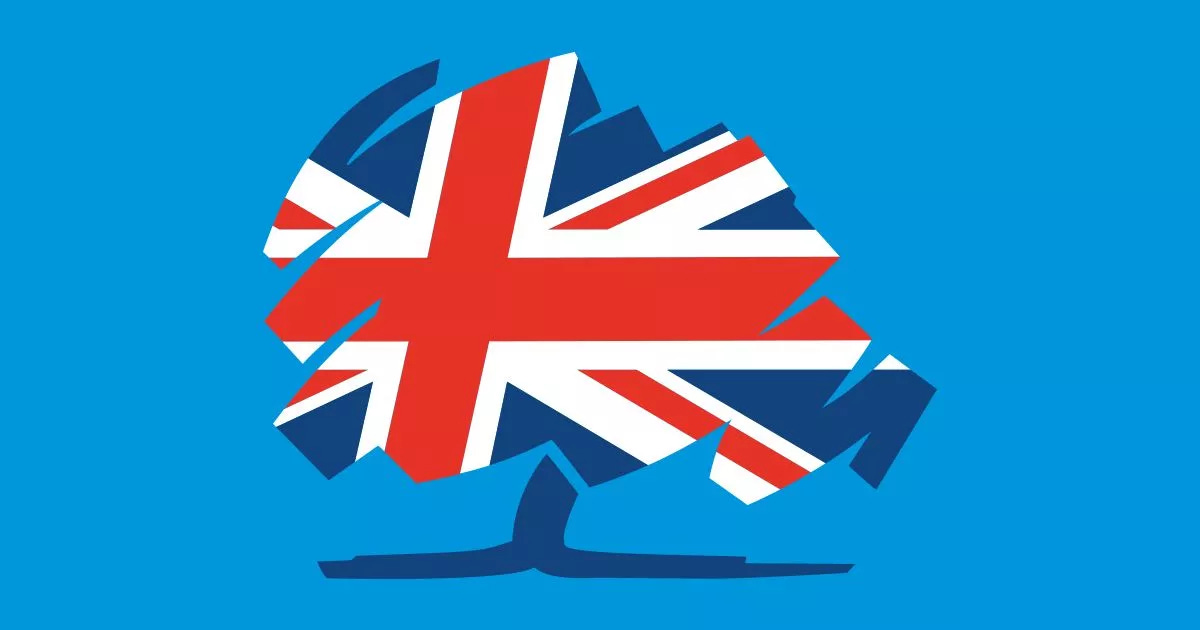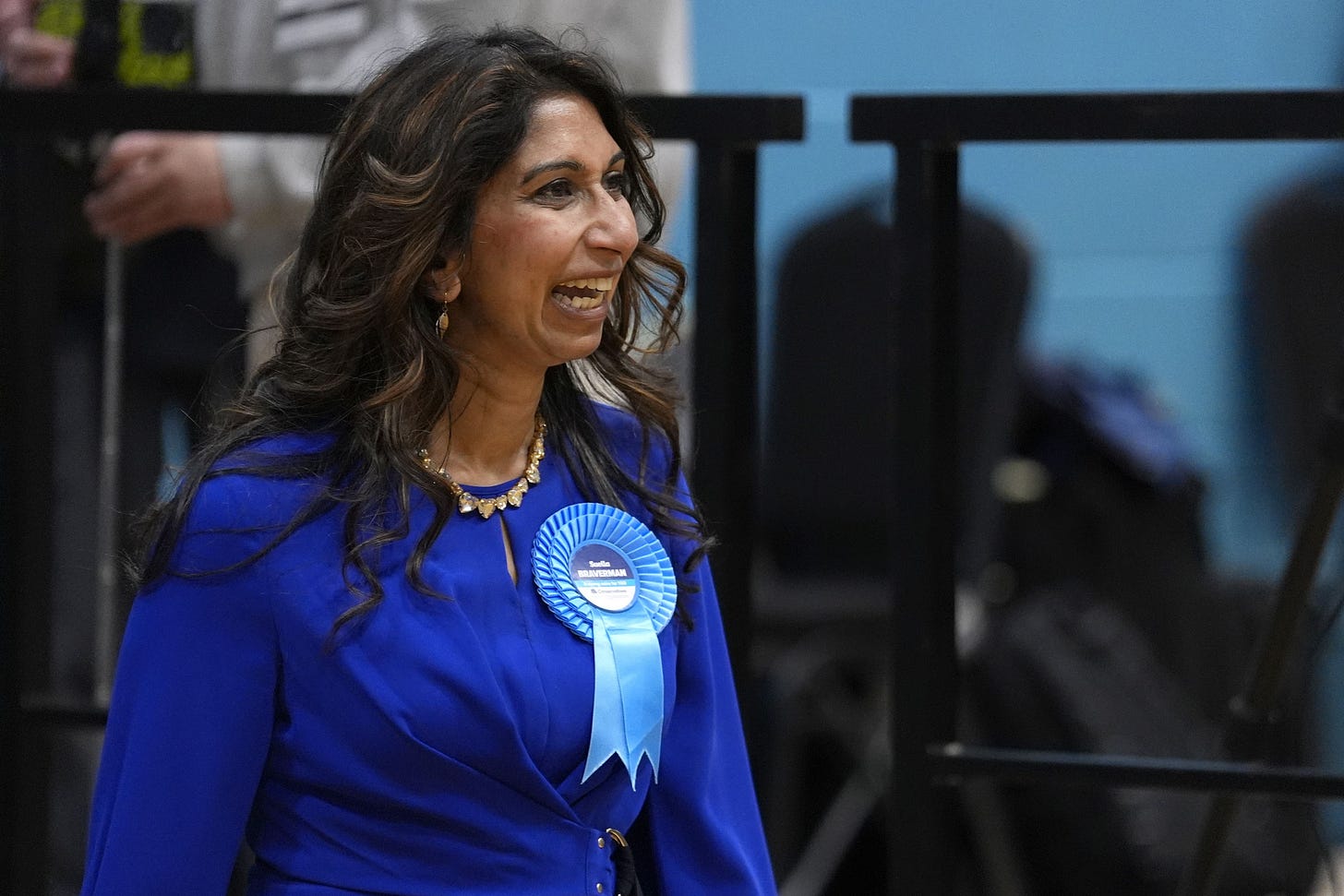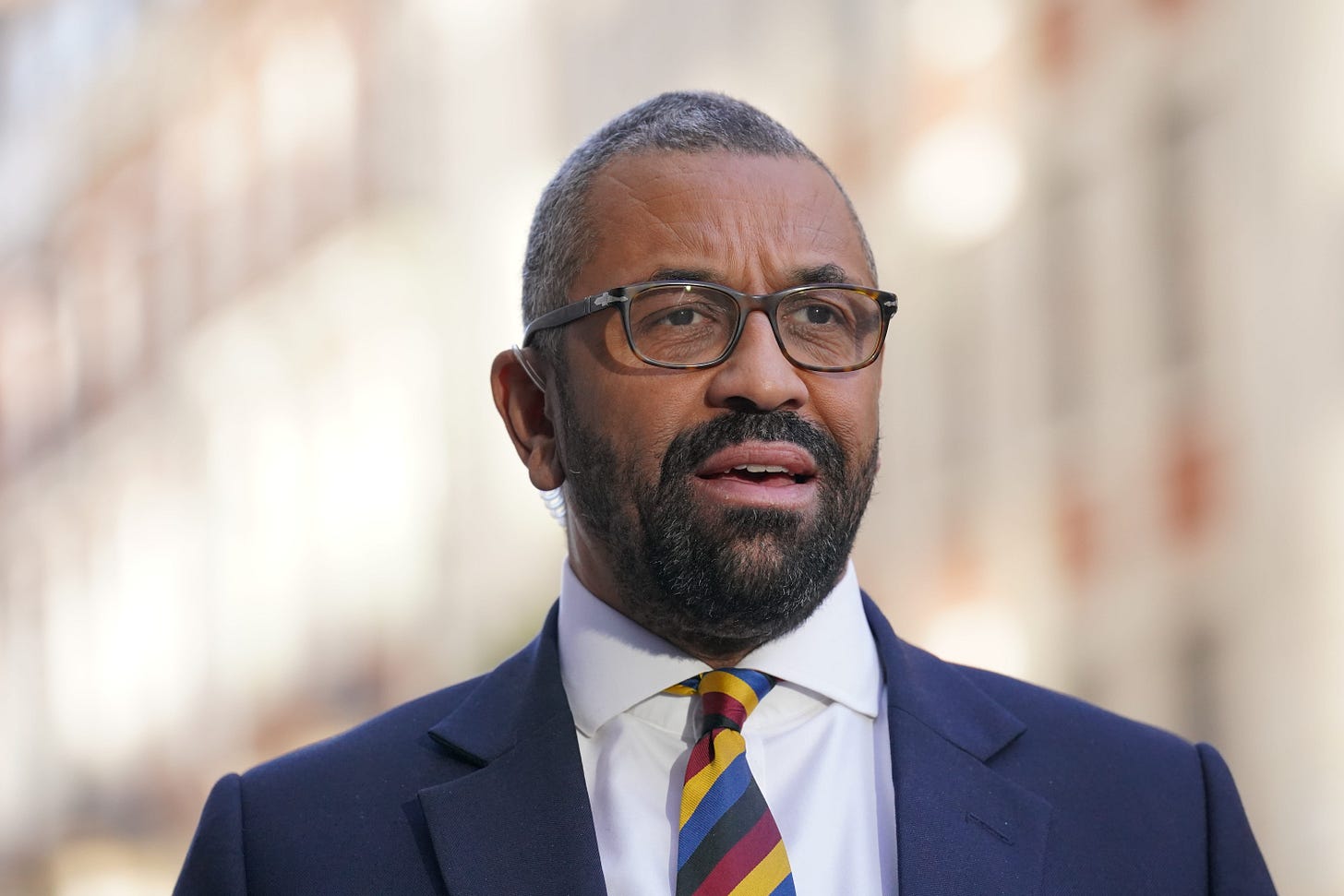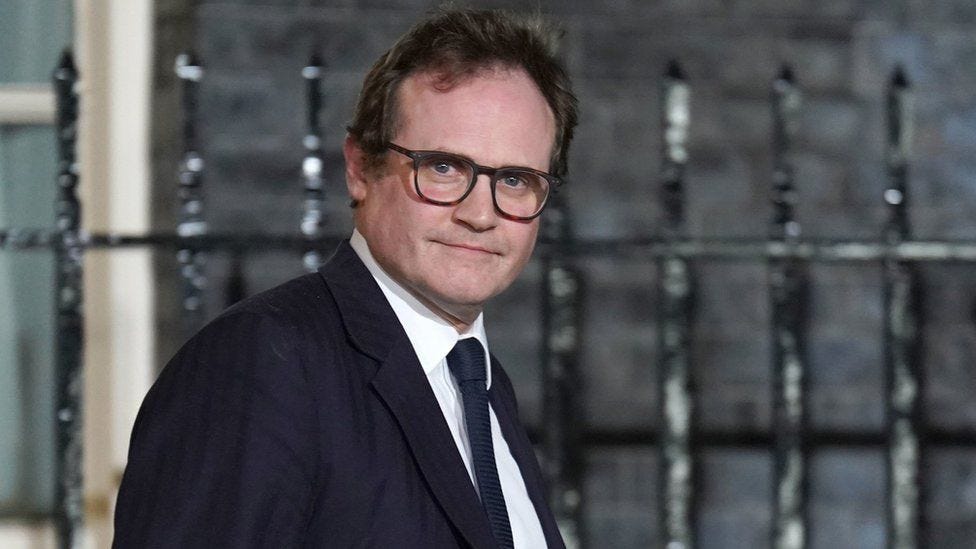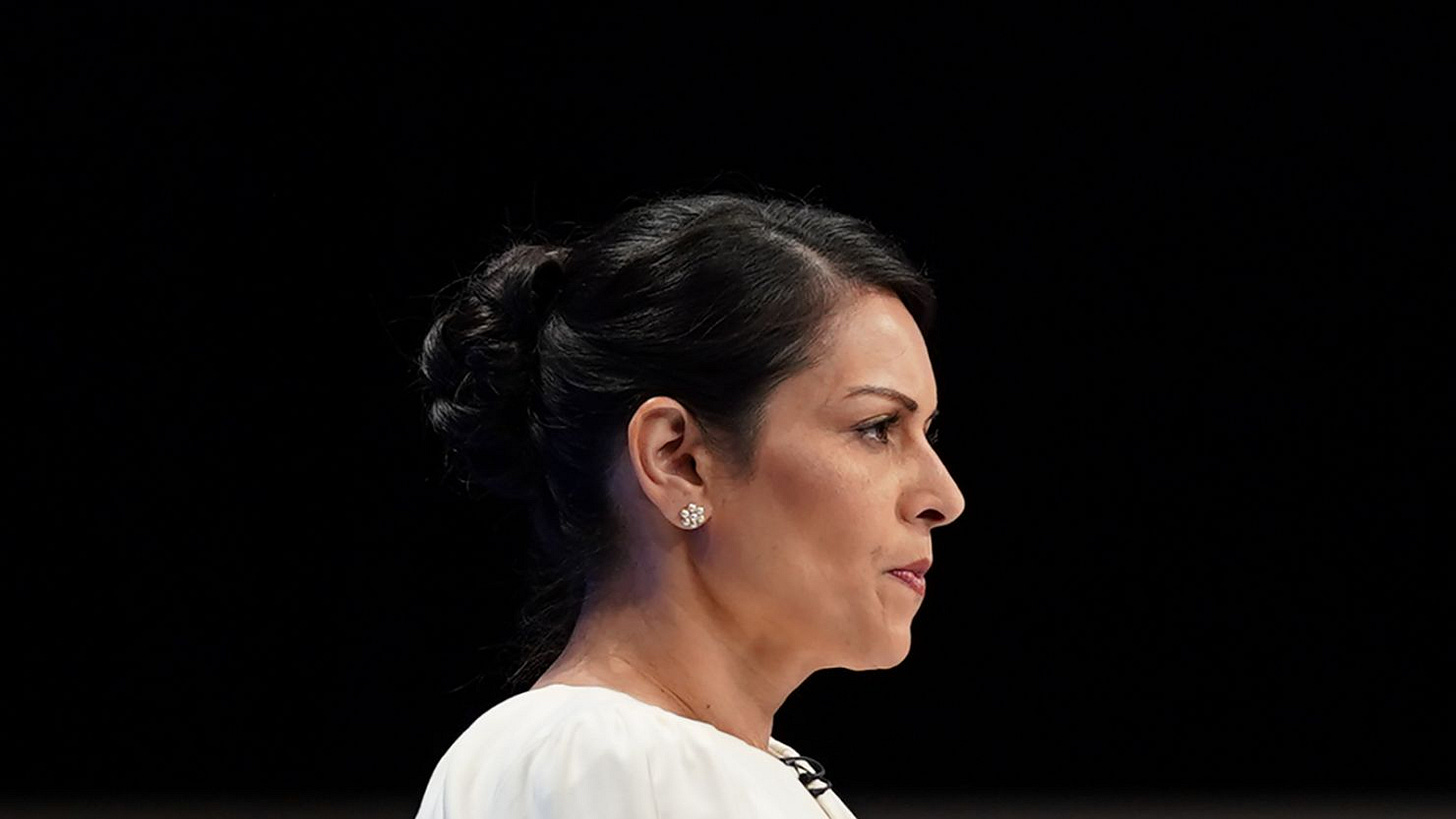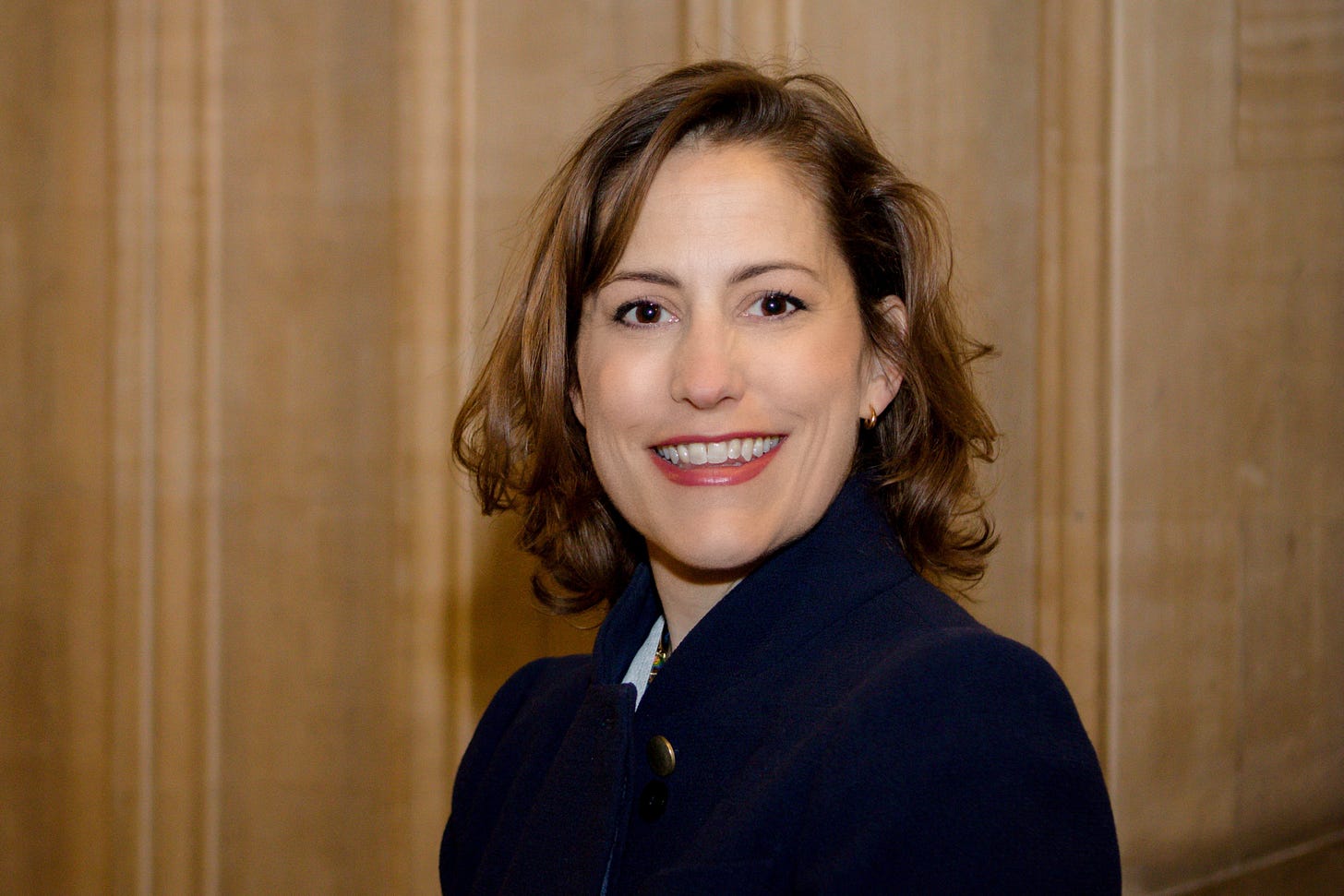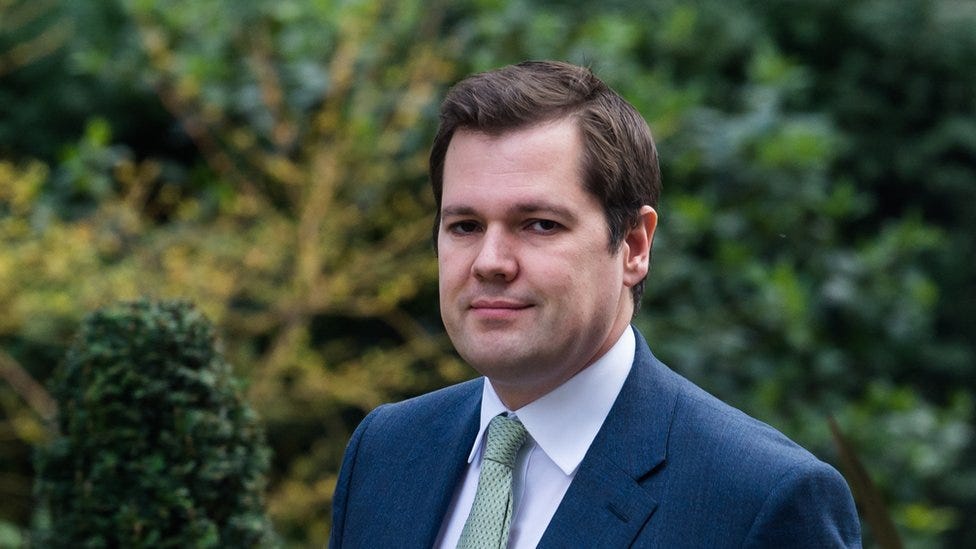The Official Conservative Leadership Tier List
Ranking the Conservative leadership contenders that could replace Sunak.
On Thursday, the Conservative Party suffered the largest defeat in its 200 years of existence. Plummeting to 22% of the vote share - almost half the vote share it received in 2019 - the party lost 244 seats across the entire country, including those of 12 cabinet members and former PM Liz Truss.
It’s not just a matter of how many seats the party lost but how marginal their remaining seats are now. Tom Calver, Data Editor at the Times, crunched the numbers and found that the great majority of Conservative constituencies are now held on vote shares of between 30 and 40% — and all but five have majorities of less than 10,000. The Tory haul of seats isn’t just very small, but also extremely precarious.
As the dust settles on the electoral armageddon, Tory MPs will begin the process of rebuilding in opposition, starting with the appointment of a new leader following Rishi Sunak’s resignation.
While recriminations are a natural response to defeats, the scale of the Conservative wipeout cannot be laid entirely at Sunak’s feet. He ran a dire campaign, which exposed at every point his misunderstanding of the electorate, arrogance, poor judgement, and lack of political instincts. Another leader perhaps could’ve steered the party to a more respectable result. But not by much. And as what is left of the parliamentary party contemplates where they go from here, they would do well to recognise that.
The scale of the devastation engulfing what has for a century been considered the natural party of government is hard to fully articulate. With 121 MPs, this is the Tories’ worst-ever result – far past the “psychological Rubicon” of Labour’s 1997 landslide victory, below even the absolute nadir of 1906.
From Brighton to the Scottish borders, the coast of East Anglia to the Irish Sea, it is possible to cross the length and breadth of England and Wales without once stepping into Tory land. In Scotland, the party only survives thanks to the simultaneous disintegration of the SNP and tactical voting from Unionists. The seats of four of the past five Conservative prime ministers are now in the hands of Labour or the Liberal Democrats. Forget the Red Wall and the Blue Wall; put bluntly, there is no longer any such thing as a safe Tory seat.
The party is now vulnerable on both flanks: closer to the centre, they now have the resurgent Liberal Democrats threatening them in their traditional heartlands in the South East and West, while Reform continues to make entry into the working-class, Leave-voting, socially-conservative seats that catapulted Boris Johnson to victory in 2019.
This is not just a crisis of ideology or geography, but of reputation. Despite winning an impressive majority 5 years ago, the Conservatives did very little with it. Instead, they lurched from one scandal to the next, destroying their credibility in the process. That collapse is not simply the result of one ill-equipped leader, however much it might comfort Sunak’s fiercest critics in the party to pretend otherwise. In their own way, each of the prime ministers of the recently ended Conservative era played their part. David Cameron for gambling with a referendum he never thought he would lose. Theresa May for her rigidity and mismanagement of the Brexit process. Boris Johnson for his fecklessness, hubris, dishonesty and boundless self-interest. Liz Truss for turning the UK economy into a lab for her ideological experiments.All, like Sunak, prioritised either managing the internal divisions within their party or pursuing their own dogmatic agenda over the long-term interests of the country. All, like Sunak, kicked tough decisions – on public services, investment, housebuilding, immigration, health and social care, and what to do when the era of low interest rates ceased to paper over the structural forces hamstringing the UK economy – down the road, as though they were somebody else’s problem to deal with. Now, with the first Labour government in 14 years, they are.
As returning Conservative MP Neil O’Brien put it on Friday morning when the party’s worst fears had been confirmed, “In a democracy the customer is always right.” Labour had to learn that lesson to recover from its 2019 disaster. Now it’s the Conservatives’ turn. This is not a question of whether the party needs to be more or less right wing. The sheer range of Conservative losses, and the range of parties it lost to, shows that voters do not trust it to be either. The Conservative Party not only has to decide what it wants its coalition to be, but it also must convince voters it can deliver on those promises.
Analysis by the FT shows that on the questions of whether the party is competent, fit to govern, understands the problems facing Britain, and keeps its promises, public trust has nose-dived. By the end – after Cameron and May had laid the groundwork for the debacle of Johnson and Truss, which Sunak failed to confront – it did not matter what direction the Conservatives tried to move in. Voters had lost faith in the party’s ability to think beyond its own self-interest. It’s not credible on immigration, which has soared over the past few years. It’s not credible on net zero, after it backed off its targets. It’s not credible on the economy – Liz Truss’s “minibudget” saw to that. The list goes on.
No rebuilding process can begin without that fact being acknowledged. The Boris Johnson landslide four and a half years ago masked the fact that the party’s centre was already starting to rot, bright flowers distracting from the decomposition under way.
In the initial aftermath, the contenders will be too consumed with the early stages of grief – denial of the scale of the challenge, anger at Labour and each other, bargaining with Reform voters – to be honest with themselves. Sunak has said he will stay on as leader while the terms of the contest are agreed. It is unclear how long that will be – the most constructive thing he could do for his wounded party now would be to remain and allow a period of quiet reflection before the knife fight begins.
Despondent and braced for the possibility of wandering the political wilderness for a decade, conservatives will now have to appoint not only a new leader but decide on which political strategy they wish to pursue in opposition. Will they double down on social conservative dogma in a bid to appeal to the growing Americanisation of British politics? Or will they opt for a more moderate approach, hoping to make inroads with the centrist suburban voters in the Blue Wall that have deserted them for the Liberal Democrats in recent years? The answer to those questions rests predominantly on who Conservative MPs vote to lead them.
Credibility takes time to win back, and a degree of humility that is most likely out of reach of anyone associated with the past 14 years. They would do better to focus their efforts at the bottom than the top, at the grassroots level rather than in the corridors of Westminster, on revitalising the poisoned ecosystem that has decayed to such an extent that, right now, nothing healthy is able to grow.
Below, I have gathered together the most likely candidates, ranked on the probability of them winning. I’ve also taken into account their prior experience, their ideological tendencies, and what kind of leader they would be. Without further ado, here are the candidates to replace Sunak as Leader of the Conservative Party (if they survive the next election, that is).
A Tier
Kemi Badenoch
Experience = Minister for Women and Equalities (Oct 2022 - July 2024), President of the Board of Trade (Oct 2022 - July 2024)
Seat = Saffron Walden (Majority of 4.8%)
According to a poll published by Conservative Home over the weekend, Kemi Badenoch is the favourite to succeed Rishi Sunak as Leader of the Conservative Party, with 31% of Party Members signalling they would vote for her.
First elected in 2017, Badenoch spent most of her political career on the backbenches, a nameless Tory amongst 317. That all changed, however, when she entered the leadership race to succeed Boris Johnson. Overnight, she became a new conservative sensation, topping opinion polls for grassroots members and overshadowing other established candidates. Though she was ultimately unsuccessful - finishing 5th place in the contest - in the role of Women and Equalities Minister, Badenoch has carved a new lane for herself in the party, pursuing a combative culture war agenda that appeals to the party’s base.
Over the 2023 annual party conference, she launched a dual-pronged assault, courting business representatives and cajoling well-paid lobbyists in an effort to cultivate a financial base. Using her main conference speech to rail against liberal attempts to “re-racialize society,” and against Brexit naysayers who "think the answer to everything is the EU,” Badenoch has already made her moves towards the leadership.
Suella Braverman
Experience = Home Secretary (Sept 2022 - Nov 2023), Attorney General (Sept 2021 - Sept 2022)
Seat = Fareham and Waterlooville (Majority of 12.1%)
An immigration hard-liner and culture war warrior, Braverman is a hero to the party’s right flank. Her stint as Attorney General, best remembered for her attempts to give threadbare legal cover to successive attempts by the Johnson government to break the Withdrawal Agreement with the EU, proved that she was willing to break with conventions to accomplish her goals.
As Home Secretary, Braverman made the Rwanda deportation scheme the focus of her department, demonstrating that she is passionate about reducing immigration numbers. She also helped champion the government’s Public Orders Bill, which equipped law enforcement agencies with greater powers to arrest and detain protests deemed “disruptive” to public life. While all of these stances enamour her with the party’s grassroots, it doesn’t help her with the MPs or the wider public, both of which lean noticeably more to the centre than her supporters. By making immigration and crime centrepieces of her campaign, Braverman may find it easier to outflank the other candidates, but owing to the fact most of her colleagues allegedly dislike her, she may struggle to make it to the final runoff.
Before the election, Ms Braverman called for the Tories to work with Reform UK - and said the Conservatives should welcome Nigel Farage to the party. Expect that to be a defining faultline in the election race.
James Cleverly
Experience = Home Secretary (Nov 2023 - Present), Foreign Secretary (Sept 2022 - Nov 2023), Education Secretary (Jul - Sept 2022)
Seat = Braintree (Majority of 7.5%)
Cleverly, whose allies argue is in the position of being liked across the party and having been loyal to different prime ministers, is the second most popular Cabinet minister among Tory party members, according to ConservativeHome's most recent survey. His time as Foreign Secretary gave him a much larger role, allowing Cleverly to demonstrate his powerful media performance skills, a desired attribute for any leadership candidate. He is now being talked about in moderate Tory circles as a candidate who could unify the party. Regardless, Cleverly is still unknown to the wider public and he hasn’t really asserted himself while in office, limiting his appeal to the party membership.
B Tier
Tom Tugendhat
Experience = Minister of State for Security (September 2022 - Present), Chair of the Foreign Affairs Committee (July 2017 - September 2022)
Seat = Tonbridge and Malling (Majority of 22.2%)
Affable and not short on self-confidence, the former security minister is the main surviving MP likely to become the vessel for hopes of Tory centrists, now that Jeremy Hunt has ruled himself out of the mix. His chances hinge primarily on whether a rump parliamentary party sees a bad defeat as a reason to tack towards the centre or move further to the right. If the party’s centre can rally around him, there may be a chance, albeit a slim one, for him to clinch the nomination amidst a fractured right.
Priti Patel
Experience = Home Secretary (Jul 2019 - Sept 2022), International Development Secretary (Jul 2016 - Nov 2017)
Seat = Witham (Majority of 10.2%)
Once the darling of the conservative right, since being demoted as Home Secretary, Pritil Patel’s political influence has waned. Outflanked by Braverman, Patel’s appeal as a passionate advocate for lower immigration isn’t as revolutionary as it was when she first entered government. For many, in the party and outside, Patel’s time as a major political figure looks to be long gone. Still, her hubris may motivate her to run in the next leadership election. Though with the inclusion of other firebrand and politically relevant candidates - like Braverman and Badenoch - Patel will find herself being squeezed on all sides.
C Tier
Victoria Atkins
Experience = Health Secretary (Nov 2023 - Jul 2024)
Seat = Louth and Horncastle (Majority of 11.8%)
Though an MP since 2015, Atkins spent little more than six months in the cabinet, being made health secretary in the final Sunak reshuffle. Aside from that, her political portfolio remains largely scarce. If she decides to enter the race, she will undoubtedly be the dark horse candidate.
Robert Jenrick
Experience = Minister of State for Immigration (Oct 2022 - Dec 2023)
Seat = Newark (Majority of 6.7%)
He was originally a Sunak loyalist and was appointed immigration minister, partly to keep the more right-wing Ms Braverman in check, according to reports. However, Mr Jenrick later hit the headlines when he resigned over Mr Sunak's Rwanda bill, saying he could not continue in his post when he had such "strong disagreements with the direction of the government's policy on immigration.”
By the election, he too was acting as a voice on the right of the party.


